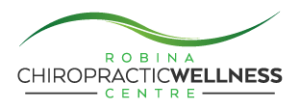As a chiropractor with over two decades of experience, I’ve seen this concern arise time and time again, so let’s shed some light on why it happens and what it means for your chiropractic journey.
Why Does Post-Adjustment Soreness Happen?
- Muscle Tension Release: Chiropractic adjustments aim to realign the spine, which often involves manipulating the surrounding muscles and soft tissues. As these muscles adapt to their new state, some soreness may occur, similar to the soreness experienced after a workout.
- Microscopic Tissue Damage: Adjustments can exert force on the body’s tissues, leading to tiny tears or trauma in muscles and ligaments. This is part of the healing process and contributes to improved flexibility and range of motion in the long run.
- Realigning the Spine: Correcting misalignments in the spine can cause temporary discomfort as the body adjusts to its new alignment. This may manifest as soreness or stiffness in the adjusted areas.
- Releasing Nerve Impingement: Adjustments can improve nerve transmission, leading to a return of sensation and potentially increased sensitivity to pain. This is a sign that your nervous system is healing and returning to normal function.
- Individual Sensitivity: Everyone responds differently to chiropractic adjustments due to factors like the severity of misalignments, underlying health conditions, and relaxation during the adjustment process.
What Does This Mean for You?
Post-adjustment soreness is a common and generally benign aspect of chiropractic care. It’s often a sign that your body is responding positively to the adjustments and undergoing necessary changes. However, if soreness persists or becomes severe, it’s crucial to communicate with your chiropractor to ensure your treatment plan is tailored to your individual needs.
Final Thoughts
Remember, your chiropractor is here to support you on your journey to improved spinal health. If you have any questions or concerns about post-adjustment soreness or any other aspect of your care, don’t hesitate to reach out. We’re here to help you every step of the way.
I hope this clears up any confusion about post-adjustment soreness. If you have any more questions, please leave us a message.
